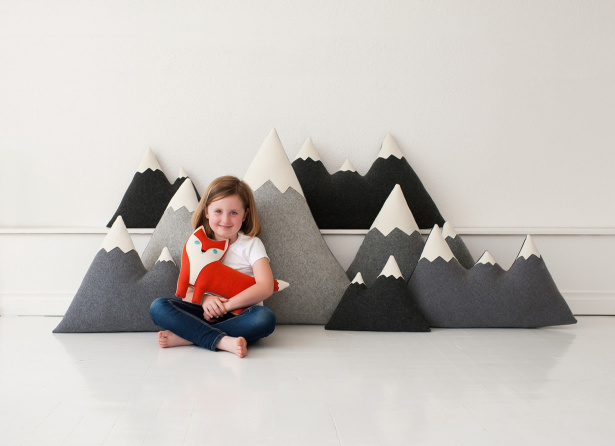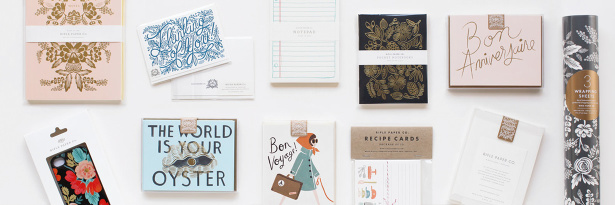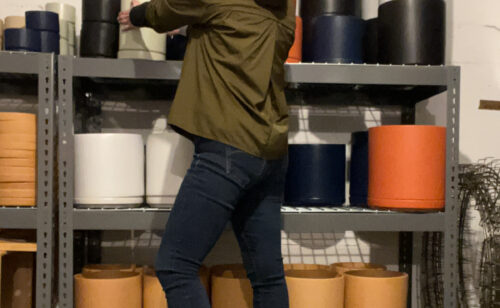
What to do when someone copies your design? Aeolidia serves creative businesses, and many of our readers and our clients are designing, if not creating and hand-making, the products they sell. Since they are often creating original works of art to sell, they find social media and marketplaces like Etsy to be both a blessing and a curse. It’s easier than ever for you to get your products in front of your customers’ eyes, but it also means your competitors can be hot on your heels, and in some cases, designers will find that their work is being copied and sold. It’s practically inevitable if you reach any level of success, so today we will tackle the question: how do you deal with copyright infringement?
This is a topic with widespread reach in the creative community, and I gathered together some established design-oriented businesses to tell you their stories.
Two things prompted this post. One was a discussion with a brand-new client who had been using some popular phrases in her work. I approached her with my concerns about differentiating her business for a successful project. It turned out she was with me all the way and part of her plan for her project with us was to change her design direction and start working in her unique style. I share some of my advice to her towards the end of this post.
The second thing that got me thinking about copying was when Amanda of Three Bad seeds emailed me about her situation, explained below:
Etsy sellers have copied Three Bad Seeds’ original, flagship product

Amanda Weiss of Three Bad Seeds
Amanda emailed me this spring to ask about a technical solution to her copying problem. Over five years ago, she was the only person on the internet selling mountain-shaped pillows, but ever since she got some visibility for her product, she sees more and more Etsy sellers copying her original idea; sometimes putting their own spin on it, and sometimes not. She wanted to find a way to corner the market for anyone searching for a “mountain pillow.” She wanted to show up first in the search and be established as the originator.
We talked about options for getting more Google credibility for “mountain pillow,” but also discussed whether it was worth the time and effort it would take to support and defend that particular product. I told Amanda that it’s aggravating when others start copying your work. From an outside perspective, though, that tells me a business has made it! The designer has created something unique and lovable that people want. For Amanda’s mountain pillow, she can improve it, add to it, stick with it, or come up with her next “mountain pillow” type achievement.
Big box sellers have copied AHeirloom’s original product

Amy Stringer-Mowat of AHeirloom
Amanda’s concern reminded me of an interview we did with one of our clients, AHeirloom. They created the original state shaped cutting boards, and they got copied so much that they aren’t unique anymore.
Amy tells us:
Honestly, when we started making state shaped cutting boards it was a bit of an internet sensation and an amazingly lucky break after many years of making and learning our craft. When we were first copied, I set out to find out how we could stop the copying. It was immediately eye opening for me from a direct sales and wholesale perspective. Not only were small business owners taking part, but larger retailers who already had strong distribution with big box retailers were chipping away at our market share. The only way out of what felt like a nightmare was to push ourselves up.
I had to take a moment and remind myself that… we’re designers, we spent years in architecture school. They’re boot camps for creating original work, defending your ideas and for learning how to be resourceful. The goal of our professional training was to create functional, thoughtful new designs and to master our tools. The only way forward was to stay true to a combination of knowing how our work can be made and creating a strong brand vision, collection by collection. While you might be able to copy our style, you aren’t going to be able to master the level of skill that goes into the quality of our work.
There is definitely a diluted marketplace out there, but staying ahead of issues around brand confusion and copycats comes down to quality for us. We are simply creating a better product in the end. The state shaped cutting boards you might see outside of our shop aren’t better than ours, they’re just less expensive. I feel satisfied that our board is going to last, it’s a true American made heirloom. It’s always helpful to remember that people can’t copy your attention to detail or your experience with your craft. Mastering your tool kit can set you and your work apart; it takes time, effort and missteps. The copycat never has time for this level of professionalism, they are onto the next trend.
While quality and skill is certainly one way of working around copycats, I also always put myself in the place of our customers. I tend to think of our “best customer” a lot, review feedback or custom requests we might have had and ask myself, “what would they love to add NEXT to their table top collection?” or, “What can we make NOW to get them really excited about giving gifts from our online store and not another?” You truly have to be ahead of the curve to create that sense of excitement. The internet is easy to cruise for ideas, but generating brand loyalty online nurtures enthusiasm and encouragement for new work.
Rifle Paper Co. started a stationery trend and shaped the design landscape of an entire industry

Nathan Bond of Rifle Paper Co.
Anna and Nathan Bond launched their company in 2009, bypassing Etsy and hiring Aeolidia to create their own standalone ecommerce site. They became one of the fastest growing companies in the United States, Nathan was featured on Forbes’ 2015 30 Under 30 list, and suddenly companies sprouted up all over with business names ending in “Paper Co.” and with designs that were clearly striving to look like Anna’s.
We interviewed Nathan over the phone for his take on this, and he told us that from the beginning, there wasn’t anything quite like what Anna was designing, which was one of the main reasons they started Rifle. They were developing a style around full-color illustrated designs, while back then, the more creative and design-focused brands were mostly letterpress.
The full-color design work they began using was, at the time, relegated to the mass-market brands, and was not very design focused. There was nothing really “cool” out there in that style, and Anna and Nathan felt that there was a great opportunity for them to jump in and do something different and fresh.
It wasn’t long after Rifle hit the scene that people started to notice, and the Rifle style began to be a trend in the industry. Nathan says they expected this, but were surprised by how far it went:
It wasn’t just people saying, “let’s do high-end, full-color, beautifully illustrated stationery,” it was, “let’s do that and make it look like it’s Rifle.”
That’s something we dealt with very early on, and continue to deal with today, but I think our perspective has changed. […] We always knew there would be copycats, but it took us off guard that there would be that many people that willing to just take and not do their own style. It surprised us, because it didn’t seem like a very smart thing or a good strategy, and it was annoying. You know: find your own voice.
I think it bothered us, and Anna particularly, at first, because she was trying to pour her identity into it. So it felt like that was off limits. […] It didn’t take too long before we just stopped caring at all, to be frank. Just realizing that it’s not a good business strategy to copy other people, because you’re always going to be one step behind them, first off. It’s not really good business and even today it really doesn’t have any impact on us. We’re trying to create a brand and a voice and there’s a lot more to it than just our products. There are lots of people biting on things and copying things here and there, but at the end of the day, they’re getting the crumbs and we’re getting the meal.
I think that’s always how it’s been and [we started] realizing none of this stuff really matters. Now, we’re not going to let people copy our stuff exactly. We’re not going to let people literally take our stuff and print it. That’s off limits. But as far as people doing that, “heavily influenced by Rifle” thing… I don’t think it’s great. It’s kind of annoying. It’s not good business on their part, and it’s a little bit odd. At the end of the day, we don’t sit around thinking about it.
We asked Nathan if they have purposefully shifted their business to innovate, and he told us,
Absolutely. That’s a big part of it, too. You have to stay ahead. You know this sort of stuff is going to happen. Some of it isn’t even bad, some of it is we’ve started a trend. Even for people that aren’t really taking our look, they’re still going to be jumping off a trend that we might have kickstarted. That’s a real possibility, and that’s totally legit. But our job is to keep pushing the trend and keep starting new trends and keep ahead of them and really honestly be beyond trend. Outside of trend. Transcend trend, you might even say.
The reason we’ve been able to continue to be successful is because we’ve been pushing the envelope since day one. We’ve never gotten comfortable. We really really really want to push the design forward at all times and continue to grow the idea that is Rifle. I think we’ve done a really good job of that. We’ve definitely worked really hard at it.
Emily McDowell creates highly original work which sparks a fire of copycat businesses

Emily McDowell of Emily McDowell Studio
Emily McDowell didn’t just fall accidentally into her business. In 2012, she saw an opportunity to create a new kind of greeting card that reflected the relationships we actually have, not the ones we wish we had. This concept felt fresh, and her honest copywriting combined with her signature hand-lettering style helped to inspire a shift in the greeting card industry away from saccharine messaging. Emily strategically established her brand before launching another original idea in 2015: Empathy Cards™ for serious illness, grief, and loss. Emily worked to apply her genuine communication style to the staid “sympathy card” category, and the resulting Empathy Cards™ were wildly successful. No one had really seen anything like them: bluntly and humorously honest about some of life’s most difficult situations, while being adamantly on the recipient’s side.
We asked Emily for her thoughts on copying:
Copying used to REALLY upset me, and it still doesn’t feel great, but I’ve learned to deal with it. I come from a long career in advertising, where the absolute worst thing you can do as a creative is copy someone else’s idea– you get branded a hack, people don’t want to work with you, and you won’t get hired. So the transition from that world to the very different world of creating products to sell was a really tough one for me. I wasn’t really prepared for the fact that in this business, when you do something new that people turn out to really like, it becomes a “trend,” and it’s considered normal for other designers to adopt it.
As a result, I did some things in my first couple of years in business that I’m not proud of, like calling people out on social media, which isn’t appropriate. (Never publicly comment or accuse someone of copying, no matter how blatant it is or how pissed you are. Send them an email privately.) If you’re being copied, depending on the circumstances, you can sometimes take legal action. For example, if someone copies your original text or artwork and puts it on a product to sell, that violates IP law and you can work with an IP attorney to send them a cease and desist or DMCA takedown notice. But the tougher cases to deal with are the gray areas, when you’ve worked hard to build your brand and popularize a certain style, and another brand comes along and creates things that are very closely “inspired” by your work, but aren’t direct copies.
I have personally come to the conclusion that for me, it’s generally not worth pursuing those cases legally, even though it feels really shitty when it happens to you. When another brand dilutes your brand and causes brand confusion (i.e, people look at their work and think it’s yours), that’s technically something you can take legal action on, but the reality is that those cases are very expensive and difficult. At this point, I choose to focus on just continuing to evolve and make better work. A copycat can do what you did last year, but they don’t know what you’re going to do next year.
How do you make sure you’re not copying? I can tell you what I do, which is: any time I come up with an idea for a piece of writing, I google extensively to see if it’s been done before. If it has, I don’t do it. (This happens all the time.) I also look critically at my work and think, “Would someone who saw this think it was from another stationery designer?” If the look and feel are too close to another designer’s work, I kill or change the idea.
Even though I always come up with ideas independently, I really pride myself on creating original work, which also means not making things that already exist. The best way to build a brand is to be a creative leader; following a trend may mean sales, but the more your work is derivative of things that are already out there, the harder it will be to build a meaningful brand.
A brand new business, Handmaid Embroidery, shares her perspective on a “stalker” type copycat

Cristina Trinidad of Handmaid Embroidery
Cristina is new to making and selling, but has already experienced a problem with copying, and oddly enough, her “copycat” is a more established business. She decided to look inward rather than lash outward, and she shares her philosophy with us:
I am not a long established online shop owner, or maker, for that matter. I taught myself to embroider last August (yes, 2015). My 8 year old son, then 7, loved my stitches and suggested that I sell them in a lemonade stand in front of our house, that we could work together. I thought it was a sweet idea, but the notion stuck. I opened an Etsy shop in October and have been stitching every day.
I recently had someone steal my idea – and it was infuriating. I felt violated, sad and betrayed. I knew this person in Facebook groups I had participated in, often shared thoughts, my opinions and inspiration in. At first, I couldn’t believe it, much like when someone blatantly and publicly insults you. You freeze and don’t know what to say wondering, “did he/she really say that?!” I asked a trusted friend I knew wouldn’t pull punches to compare the work and let me know if what I was seeing was real, or if I was just scrutinizing a little too closely. My friend confirmed my hunches.
I didn’t know what to do. I knew that approaching this person would only make me look crazy. How so? Well the copycat is more well known, has been in business longer. Why would they choose to copy the work of a newbie? Also, what was I hoping to accomplish? Had I asked this person to “take it down” and they did, or didn’t, what then? I work hard to focus on changing myself rather than others and went to my craft room. I began to doodle and draw and design until I wasn’t upset anymore. I created this hoop. I felt the way I was treated was akin to something out of Mean Girls, or the way one is treated in high school. It’s so immature, really. That’s where the high school doodles came in.
Always wanting to share experiences with others in an effort to help them, I wrote a post about it, 7 Ways to Conquer A Creative Copycat.
I still run into this person in those Facebook groups that I am a part of and I never mentioned a word. Now that I’ve “gotten out my frustration” with stitches and words, seeing this person “around” doesn’t sting nearly as much as it did initially.
And that person? Well, they are still trying to keep up 😉 and that’s flattery, no?
Committed LLC pushes back against copyright infringers

Jennifer Vickers of Committed LLC
Jennifer came up with a new idea, and quickly saw it being copied and sold, sometimes with her exact same design or wording. She spent some time trying to stop the infringement, and finally settled into using her energy to improve her business instead, a common theme. Jennifer tells us:
I created the Dry Erase Newborn Feeding Tracker when my first daughter was born in 2011, and just sold it to friends. It was popular, so I started on Etsy, then Pinterest came along, then it was a nicely-humming machine. Then came the copycats. They used my copy, my design elements, some used my photos. All were bad, heartbreaking, and frustrating.
I’d go on Cease & Desist benders, contacting each shop owner, compiling evidence of their infringements. Most people would apologize and remove their listings. A few pushed back and refused, but slightly changed their wording. Worse, they were licensing their designs for pennies to other sellers, so I had to contact those people too. It was so much time, so much energy, and really made me hate my business.
Then it dawned on me. I started this. I can stay on top of it. My initial solution was to up my SEO game. Take new photos, populate social media with MY product, Pin the hell out of it and make mine show up at the top. That was great for a while, but I was burning out. So I started to come up with new products. My creativity and design are what makes my products unique and nobody can take that away. So now I have a small website with more products: onesies, shirts, cards, pregnancy announcements, and I’m spending my time getting more products out there.
Pinterest is a blessing and a curse. So is Etsy. I get loads of traffic, but more eyeballs means more copycats. At least I can rest assured that their designs aren’t as good, their copy isn’t well thought-out (since they didn’t come up with the idea), and they’ll go out of business because they’re WAY underpricing the product.
Skinny laMinx takes on the fashion world

Heather Moore of Skinny laMinx
In the world of fashion, it seems like there are no rules. Knockoffs of every designer garment appear immediately, and no recourse can be taken, since fashion designs aren’t protected by copyright. So what do you do if a fashion designer, or someone else outside your industry uses your pattern in their clothing or other product?
Skinny laMinx was started by Heather in 2007, and consistently creates pattern after beautiful pattern, and product after beautiful product. They license their designs to companies like Chronicle Books, and Cloud9 Fabrics, but sometimes people just grab and use those designs. I asked Heather for her strategy around this, and she shared:
Over the years, I’ve seen various copies and imitations of Skinny laMinx. There are the ‘inspired by’ designs that are pretty much a copy of my idea, but just using a different version of my motif (for instance, there’s another designer who has a design with cows in repeating rows, awfully like my “Herds” design, albeit a different breed of cattle), which seems a little cheeky, but it does fall into that category of flattery that people suggest one ought to appreciate. I just don’t like it when people mistake that design for mine, which does happen occasionally.
The actual note-for-note rip offs are frustrating, and I’ve seen fashion, shoes, stationery and cushions that have made unauthorised use of my designs. Again, the worst part about these is that often these items are quite poor quality, and I would hate for anyone to think that we could produce a substandard item. Often, a sternly-worded letter to the ripper-off with a threat of social media shame has, at least most of the time, seen images of these removed from the internet.
But although I might threaten social media shame, I don’t feel that loud complaining on social media is a good branding position, as it positions my business as the ‘little guy’ (which is not very chic). A more positive approach, especially when the people who have ripped you off have a high brand profile, is to mine the ‘collaboration’ for all it’s worth, splashing the news of this fabulous ‘collaboration.’ It’s something of a jiu jitsu-style approach, making lemons from lemonade!
On a more positive note around this topic: not long ago a Japanese publishing company who had unknowingly used one of my papercut designs reproduced in another material by a designer, made immediate and heartfelt apologies, amends and payment after I’d pointed out the issue.
I don’t feel that rip offs hinder my business, and their existence has not caused me to make any changes to how I do things. The only change I’ve made is to spend less energy on feeling annoyed, and instead to concentrate on the enormous gratitude I feel to Skinny laMinx fans who let me know about these things on email and Instagram. I’m so touched to know that people like my designs enough to get upset on my behalf!
Takeaways from this article
What should you do to differentiate your business and make a solid foundation for its longevity? You can push yourself to make your business completely unique. If you’re following the popular trends in stationery and you think “my unique handwriting” is your differentiator, think again.
At Aeolidia, we want to be sure we’re capturing the heart of a business when we design for them. That’s why we scrutinize the information we get from our clients, and dig deeper when we feel we’ve been given an answer that doesn’t show the strengths of a business. For instance, I asked the new client I mentioned at the start of this article what’s unique about her business, and she shared:
It’s quirky, fun, and colorful! We offer great, vivid envelopes in addition to fun greeting cards, adding pops of color (teals, yellows, mints, and corals – with a little bit of grey) everywhere! Our designs are quirky – and my handwriting/sketching is unique to the brand. I feel like my handwriting and my voice go hand-in-hand – a bit off-the-wall, casual, and approachable. Friendly, but witty (we’re known to use a bit of snark every now and then)!
I asked her to go further. She was describing her business, but nothing was standing out as special or memorable. “Quirky, fun, colorful, vivid, pops of color…” these are all things that many stationery businesses do. “Friendly but witty” is pretty much the name of the game in stationery at this moment. I suggested to her,
“Your handwriting and sketching is where you should explore further. Almost every stationery brand does their own handwriting and sketching, so doing it yourself isn’t what makes you special. It’s the way you do it, your own personal style, that matters most.
To nail your own personal style, you need to avoid following trends, and instead, MAKE trends. Following trends will let you hitch a ride and get a few extra sales, but won’t serve you well for the future of your business. You want to define a style that people can spot from across the room, before they pick up the card. Think of your favorite stationery businesses – how do you know it’s their work when you come across it in a shop? What do you like about it?”
Your Unique Selling Proposition (or USP), is what makes you different from every other company out there. You should be able to immediately tell someone what makes you different from even your closest competitors.
I’ve written about this before, and I go into detail here: Make Marketing Easy With a Unique Selling Proposition
So, if you feel that you haven’t found your voice or style, I want to push you on what makes your brand unique. It will benefit your business as a whole, and in the long run.
Thoughts From an Attorney
I pulled in our friendly colleague, Kiffanie Stahle, of The Artist’s JD, to share her thoughts from a legal perspective. Kiffanie tells us,
Several times a month I talk to creative business owners upset about a copycat. Before we even dive in, the first step is making sure what’s being copied is protected by copyright. And that’s because ideas, facts, and functional items don’t have copyright protection.
If we decide that what’s being copied does have copyright protection, then we turn to if you should act.
The law doesn’t have a grey area. Someone either:
- has permission to use your work
- is committing copyright infringement
- is okay because their use is fair use
But the law doesn’t account for the practicalities of running a creative business. Which is why over the years, I’ve developed a series of four questions. By answering these questions, we can decide when you can, can’t, and maybe shouldn’t act. These questions are:
- Did you give permission either through a contract or terms of service? Are they acting within the scope of that permission?
- Is this helping your business?
- Is this someone you wanna rumble with?
- Is their use fair use?
And your answers to these questions lands you in one of three buckets: can’t act, can act, or act with caution. (You can grab a PDF workbook that I walk you through these four questions here. The PDF also contains a graphic that guides you to deciding what bucket you fall in.)
If you end up in the “can act” bucket, the most common action steps are:
- sending DMCA takedown notice
- sending an email
- sending a cease and desist letter yourself
- having an attorney send a cease and desist letter
Even if the law is on your side it’s ultimately your decision on how to respond to copycats.
But understanding where the law will and won’t support you in stopping a copycat is important. Because you’ll end up with egg on your face if you threaten legal action over email, and then learn that you don’t have a case. (Because I would never recommend calling a copycat out on social media.)
Kiffanie is a valuable legal resource to the creative community, and she has some more on this topic to share with you. Along with the PDF workbook she mentioned, she is sharing some related articles to give you further info here: The Artist’s JD for Aeolidia
P.S. I don’t usually do a P.S. on blog posts, but if you’d like to hear pretty much the polar opposite perspective on this situation, listen to this fascinating interview with artist Jeral Tidwell, who for a time, made more money from copyright infringement cases than from his art. He is gleeful when big retailers copy and sell his work, because then he gets to work with his lawyers collecting evidence, and making big money off of their profits from his work.
If your ears are delicate, be warned that the F-bomb is dropped rather lavishly throughout: How to affordably copyright your art & how to deal with copyright infringement with Jeral Tidwell (“Hear how you can spend less than $500 to protect yourself and possibly walk away with a six-figure payday!”).
The Founder’s Bookshelf

These are all books which have significantly influenced Aeolidia for the better, and which I recommend to any business owner.
8 thoughts on “How to Deal With Copyright Infringement”
Leave a Comment
Related Posts
Let's take your online shop to the next level
The Shopify websites we design have a reputation for substantial improvements to ecommerce conversion rates and online sales. Let's talk!
















Thanks for stopping by, Michelle! It’s nice to hear how other business owners feel about this.
” it’s not a good business strategy to copy other people, because you’re always going to be one step behind them”
I totally agree with this but what about those people who are just doing and selling for fun? Their idea is not to do business. They just like to copy trends or something that they find attractive and then make to sell. I don’t think these people mind being one step behind.
No, I don’t think they mind!
Thank you so much for this post! I found it very insightful for my little craft business I’ve recently started
Take care, Michele
I’m glad to hear that, Michele!
I would like some help. I have an Etsy, Amazon, and eBay stalker who copies all of my listings and descriptions word for word including my biography. I would like to know what to do as this has been going on for 5 years and Etsy does nothing. Ebay does help. Amazon does something after awhile but the copycat continues to create new listings copying each of my knew ones and it’s not going to stop. After five years or so it’s not going to stop. They copy st least one thing a day from all of the sites. Please help
Hi Nissi,
If this person isn’t damaging your business (are they confusing your own customers?) or taking away from your own sales, you might just want to let it go and focus your attention elsewhere. If it is causing a problem for your business, I’d recommend hiring an attorney to send a Cease & Desist letter to the copycat and work with you to make it stop. It’s hard! Best wishes.